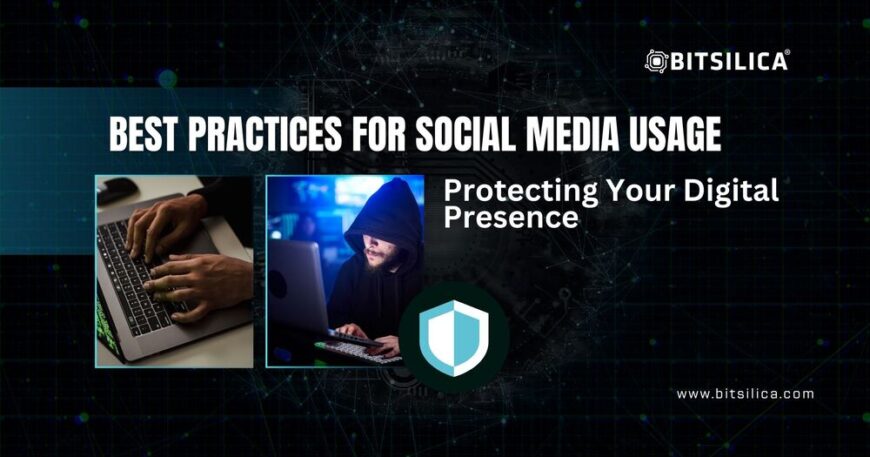Best Practices for Social Media Usage: Protecting Your Digital Presence
Introduction
Social media platforms are integral to personal and professional communication, but they also pose significant security risks if not used responsibly. This blog post will explore best practices for safe social media usage, helping you protect your digital presence and sensitive information.
Understanding the Risks of Social Media
Social media usage can expose individuals and organizations to various risks, including identity theft, phishing attacks, and reputational damage. Understanding these risks is the first step in mitigating them.
Key Risks of Social Media:
• Phishing Attacks: Cybercriminals use social media to gather personal information and craft convincing phishing messages.
• Identity Theft: Sharing too much personal information can make it easier for attackers to steal your identity.
• Reputational Damage: Inappropriate or careless posts can harm your personal or professional reputation.
Example: In 2020, several high-profile Twitter accounts were hacked and used to promote a cryptocurrency scam, demonstrating the potential risks of social media platforms.
Protecting Personal Information
Sharing personal information on social media can make you a target for cybercriminals. Be mindful of what you share and who can see it.
Best Practices:
• Limit Personal Information: Avoid sharing sensitive information such as your home address, phone number, and financial details.
• Adjust Privacy Settings: Use the privacy settings on social media platforms to control who can see your posts and personal information.
• Be Cautious with Friend Requests: Only accept friend or connection requests from people you know and trust.
Example: A study found that many users unknowingly shared personal information publicly on social media, making them more susceptible to identity theft and phishing attacks.
Recognizing and Avoiding Phishing Attempts
Social media platforms are often used by cybercriminals to launch phishing attacks. Recognizing and avoiding these attempts is crucial for protecting your information.
Best Practices:
• Verify Messages: Be skeptical of unsolicited messages, especially those asking for personal information or urging you to click on a link.
• Check URLs: Hover over links to see the actual URL before clicking. Avoid clicking on suspicious or shortened URLs.
• Report Suspicious Activity: Report any suspicious messages or accounts to the social media platform.
Example: In 2019, a phishing campaign targeted LinkedIn users with fake job offers, tricking them into disclosing personal information and login credentials.
Managing Your Digital Footprint
Your digital footprint is the trail of data you leave behind when using the internet. Managing your digital footprint helps protect your privacy and security.
Best Practices:
• Regularly Review Posts: Periodically review your social media posts and remove any that contain sensitive information or that you no longer want to be public.
• Search Yourself: Use search engines to see what information about you is publicly available and take steps to remove any unwanted content.
• Use Strong Passwords: Protect your social media accounts with strong, unique passwords and enable two-factor authentication (2FA).
Example: A professional who regularly reviewed and managed their digital footprint was able to remove outdated and potentially damaging posts, protecting their reputation and privacy.
Separating Personal and Professional Accounts
Maintaining separate accounts for personal and professional use can help protect your privacy and manage your online presence more effectively.
Best Practices:
• Create Separate Accounts: Use different accounts for personal and professional interactions to avoid mixing content.
• Adjust Privacy Settings: Set stricter privacy settings for personal accounts while keeping professional accounts more open to networking opportunities.
• Be Mindful of Cross-Posting: Avoid sharing personal content on professional accounts and vice versa.
Example: A consultant maintained separate LinkedIn and Facebook accounts, using LinkedIn for professional networking and Facebook for personal interactions, effectively managing their online presence.
Being Cautious with Third-Party Apps
Third-party apps connected to your social media accounts can pose security risks if not managed properly.
Best Practices:
• Review App Permissions: Regularly review and update the permissions granted to third-party apps connected to your social media accounts.
• Limit Access: Only grant necessary permissions to apps and avoid connecting to untrusted or unknown applications.
• Revoke Unnecessary Access: Remove third-party apps that you no longer use or that no longer need access to your accounts.
Example: A user discovered that several third-party apps connected to their social media accounts had access to more information than necessary, leading them to revoke unnecessary permissions and enhance their security.
Avoiding Oversharing
Oversharing on social media can expose you to various risks, including identity theft and targeted attacks. Be mindful of what you share and with whom.
Best Practices:
• Think Before You Post: Consider the potential consequences of sharing certain information before posting.
• Use Privacy Controls: Limit the audience for your posts to trusted friends and connections.
• Be Selective: Share personal achievements and milestones with a close circle rather than broadcasting to a wide audience.
Example: An employee who shared their vacation plans publicly on social media returned home to find their house burglarized, demonstrating the risks of oversharing.
Conclusion
Safe social media usage is essential for protecting your personal and professional information from cyber threats. By limiting personal information, recognizing phishing attempts, managing your digital footprint, separating personal and professional accounts, being cautious with third-party apps, and avoiding oversharing, you can significantly reduce the risks associated with social media. Stay vigilant and proactive in managing your social media presence to safeguard your privacy and security.





